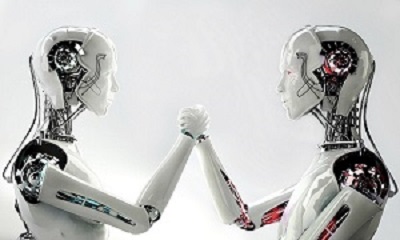Do Machines Go to School?
You might be wondering this, but the answer – sadly – is no, machines don’t have to spend, like us, almost two decades in educational institutions. However, Artificial Intelligence has been improving drastically in the last few years, which means that some machines are aware whenever they produce a mistake and they are also equipped to solve it in the future. And yes, that kind of process is commonly known as ‘learning’!
When Did Machines Start to Learn?
In 1959, the pioneer in AI Arthur Samuel stated that machine learning was ‘a field of study that gives computers the ability of learning without being explicitly programmed’. Basically, these machines are equipped with algorithms that can carry out predictions from a set of data. These algorithms build models from example inputs rather than following static programme instructions. Therefore, they can make data-driven predictions and decisions expressed as outputs.
Types of Machine Learning
1. Supervised Learning
The machine is given some example inputs and the desired outputs. The goal is to map inputs to outputs. It’s like the machine had a teacher that guided it through the process offering it different possibilities that it needs to organise.
This technique is similar to concept learning in human and animal psychology. This is, also, the most common technique to train neural networks and decision trees in machines.
2. Unsupervised Learning
In this case, the machine is left on its own because no labels are offered. This can be very useful as it allows the discovery of hidden patterns in data. However, it’s also a challenging process – the machine doesn’t know what it’s doing! That’s why rewards can be used to indicate success. Therefore, it could be said that the machine is learning through a process of trial and error – something that can be quite time consuming.
Why can this method be so useful? Well, in some cases the instructions we give to the machine might be wrong without us knowing it. For instance, some of the most well-known beliefs about backgammon were questioned when a series of computer programs (neuro-gammon and TD-gamon) became stronger than human players through unsupervised learning. This happened because the programmes discovered some principles that no one had thought of before.
3. Reinforcement Learning
The machine must perform in a dynamic environment without anything telling it when it has achieved its goal. That means that correct inputs or outputs are never presented. This is inspired in behavioural psychology, where subjects are believed to take one action or another depending on the environment.
Machine Learning in Our Everyday Lives
You know when you start watching films online and you find that the webpage is suggesting you new titles that match your tastes? That’s a way of machine learning, as the web records what you want to watch to offer you new possibilities inside what it understands as your ‘taste parameters’.
Also, self-driving cars are the essence of machine learning because they obviously need to learn from their environment to avoid any fatal mistake.
Here at European Springs we are also very proud of owning a pressing machine that learns – so it produces even better quality stamps throughout its use. The Bruderer BSTA 500-110B comes with an impressive memory system that allows it a fast and trouble-free die retooling that saves our company both time and money. It also learns to recognise which specific stamps lack the desired outstanding quality so it not only discards them but avoids making them in the future.
As you can see, machine learning is very important to us because our company’s goal is to offer you the latest technology in pressing and stamping. Contact our skilled team today to discover how we can help you with your project!
European Springs
